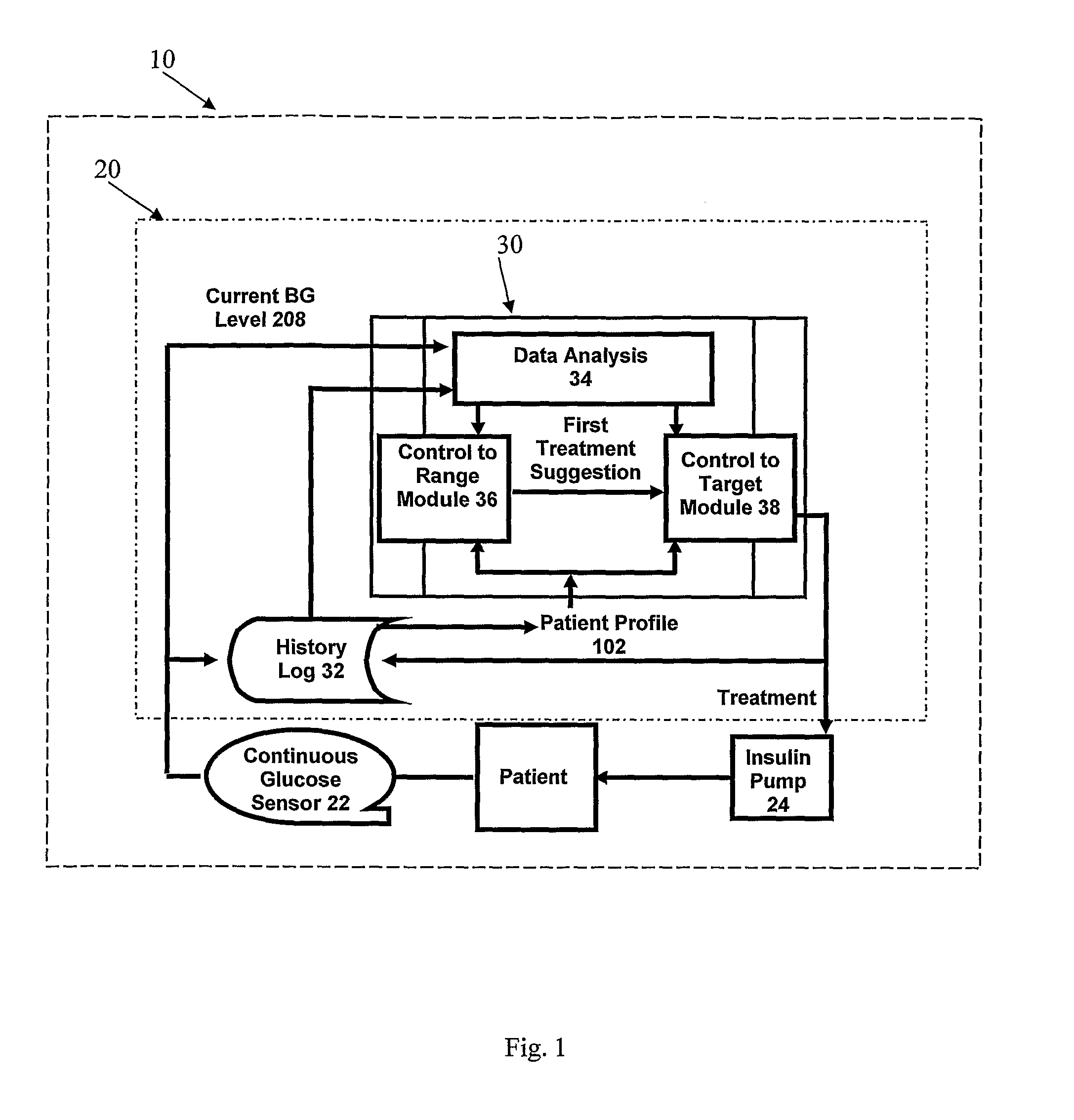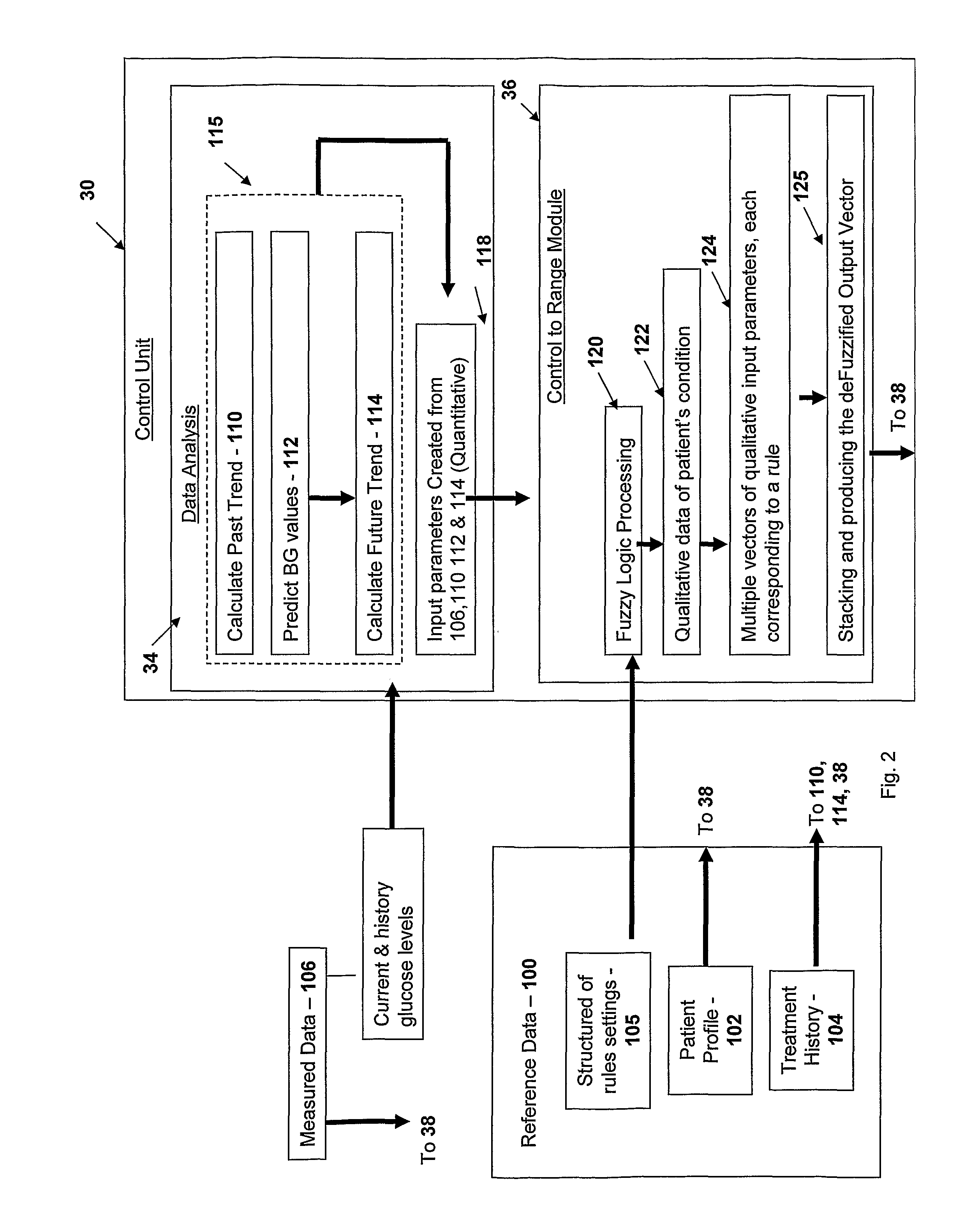Method and system for automatic monitoring of diabetes related treatments
a technology for diabetes and treatment, applied in the field of monitoring diabetes related treatment, can solve the problems of not meeting the potential of these technologies in assisting patients with the day-to-day demands of diabetes management, and turning the mission of closing the loop into a very challenging one, so as to improve the control of tidm, avoid severe hypoglycemia events, and free patients from the daily burden
- Summary
- Abstract
- Description
- Claims
- Application Information
AI Technical Summary
Benefits of technology
Problems solved by technology
Method used
Image
Examples
Embodiment Construction
[0077]Referring to FIG. 1, there is illustrated, by way of a block diagram, a treatment system 10 for carrying out diabetes treatment (controllable delivery of insulin and glucagon), utilizing a monitoring system 20 of the present invention. The monitoring system 20 is associated with a glucose measurement device 22 (continuous glucose sensor), and a drug delivery device 24 (insulin pump). The drug delivery device may also comprise a glucagon delivery pump.
[0078]The monitoring system 20 comprises a memory utility 32 (referred in the figure as History Log) for storage and / or update of reference data, including individualized patient's profile related data, and individualized patient's treatment history related data. The control unit 30 comprises a first processor module 34 for processing measured data (referred in the figure as Data Analysis) indicative of blood glucose level 208 and generating first processed data indicative thereof, a second processor module, that can be also denot...
PUM
 Login to View More
Login to View More Abstract
Description
Claims
Application Information
 Login to View More
Login to View More - R&D
- Intellectual Property
- Life Sciences
- Materials
- Tech Scout
- Unparalleled Data Quality
- Higher Quality Content
- 60% Fewer Hallucinations
Browse by: Latest US Patents, China's latest patents, Technical Efficacy Thesaurus, Application Domain, Technology Topic, Popular Technical Reports.
© 2025 PatSnap. All rights reserved.Legal|Privacy policy|Modern Slavery Act Transparency Statement|Sitemap|About US| Contact US: help@patsnap.com



